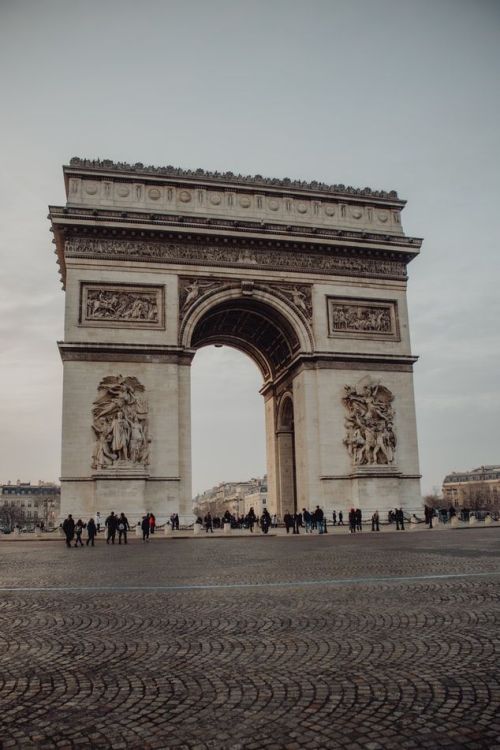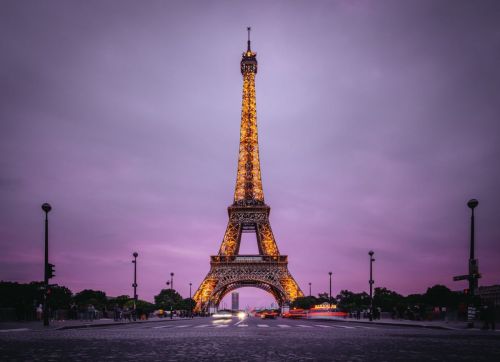The Opéra Garnier, officially known as the Palais Garnier, is an outstanding architectural work and symbolizes the golden age of opera and ballet in the 19th century.
It was built between 1861 and 1875 at the initiative of Emperor Napoleon III. Designed by Charles Garnier, this majestic work of art is distinguished by its eclectic style, combining Neo-Baroque and Neo-Renaissance elements.
The Opéra Garnier is not only stunning in its architecture but also in its opulent interior, which includes a marble staircase, a representative opera hall, gleaming candelabras, and richly decorated details.
It is a place where artists present outstanding opera, ballet, and concert works, attracting art lovers from all over the world.
It is one of the two (along with Opera Bastille) Parisian opera houses that fall under the state-run Opéra National de Paris.
Opéra Garnier has been called the most famous opera house in the world, a symbol of Paris, along with Notre-Dame, the Louvre, and the Sacre Coeur Basilica.
The Palais Garnier is also home to the Bibliothèque-Musée de l'Opéra de Paris (Library-Museum of the Paris Opera), managed by the Bibliothèque Nationale de France.
The author of the project and the person who supervised the construction was French architect Charles Garnier, who undertook the work at the behest of Emperor Napoleon III. The opera house was built in the “Napoleon III” style (Garnier is said to have described the style of the designed building in a conversation with Empress Eugenie).
The “Napoleon III” style, also known as the Second Empire style, was a strongly eclectic style, at the core of which was the inspiration of the styles of the previous period, especially the Renaissance, Louis XV, and Louis XVI, of Asian art.
The assassination attempt occurred on 14th January 1858, when the imperial couple was going to the then-existing Paris Opera House, Salle Le Peletier. The assassination was carried out by Felice Orsini, who was a member of the organization of the Carbonari (charcoal makers), a secret revolutionary association.
Orsini, hoping that the Emperor’s death would spark a revolution in France, along with three accomplices, threw bombs at the carriage on which Napoleon III and Empress Eugenie were traveling to the Paris Opera House.
Dozens of people were killed at the time, and the emperor, who was the target of the bombing, was not even injured. Orsini designed a bomb filled with fulminate mercury with a horrific, for the time, power of destruction, later called the Orsini bomb.
He used modern techniques and materials, including iron construction (a pioneering solution also used in other Napoleon III buildings, including the Bibliothèque Nationale and Les Halles).
Garnier did not leave spaces undecorated. He used polychrome (a variety of colors) for a theatrical effect, many varieties of marble and stone, porphyry, and gilded bronze.
Seventeen different types of materials were used on the opera house’s façade arranged in elaborate, multicolored friezes, columns, and statues, many of which depict deities from Greek mythology. Fourteen painters, mosaic artists, and seventy-three sculptors participated in its creation.
These busts depict many composers, including Rossini, Auber, Beethoven, Mozart, Spontini, Meyerbeer, and Halevy, as well as librettists Eugene Scribe and Philippe Quinault.
After the assassination attempt in 1858, Napoleon III decided to build a new opera house that could also meet security requirements for the imperial family.
Garnier included in his design a separate entrance for the emperor, by which he could walk straight from his carriage to his box in the opera house without coming into contact with the public.
With his ordinances in the mid-19th century, Haussmann gave the city center the modern look of the Parisian cityscape that remains today.
Napoleon III Bonaparte ordered the demolition of 12.000 square meters of medieval city buildings for an opera house. An architectural competition was announced, with entries including a young, 35-year-old, unknown architect Charles Garnier, who won the competition. Construction was hampered by high groundwater levels, making it difficult to secure the foundations.
Underneath the opera house is a reservoir for groundwater, the level of which firefighters must regularly check and pump out the excess.
In addition to the difficulty of securing foundations, construction was also delayed by the War of 1870/71 and the collapse of the Second Empire.
When the Salle Le Peletier, which had existed since 1821, burned down in 1873 (the fire, which lasted 72 hours, was probably caused by the opera house’s innovative gas lighting), the government of the Third French Republic decided to complete construction of the Opéra Garnier in January 1875.
In the 19th century, a visit to the opera house was primarily a social event; it was all about seeing and being seen. This needed a special setting in the form of an outstanding interior.
The architect created a circular Salon du Glacier with a striking marble staircase and a huge auditorium in red and gold, featuring four balconies and a ceiling painting by Marc Chagall (originally painted by Jules-Eugène Lenepveu, in 1964 a new ceiling painted by Marc Chagall was installed on a removable frame above the original).
The staircase is made of white marble and divides into two divergent tiers leading to the Grand Foyer. The pedestals of the staircase are decorated with female torches, and the ceiling above the staircase depicts scenes from Greek mythology.
The stage is the largest in Europe and can accommodate 450 artists.
The cost of making the chandelier was 30.000 gold francs. The installation of the central chandelier stirred controversy and was criticized by viewers of the fourth-level boxes for obscuring the stage and the view of the ceiling with the Lenepveu painting. Originally, the chandelier was pulled up to the dome above the auditorium for cleaning; it is now lowered. The space in the dome in the 1960s was used for opera rehearsals. In the 1980s it was converted into two floors for dance rehearsals.
On 20th May 1896, one of the chandelier’s counterweights came free, pierced the ceiling into the auditorium, and killed the concierge (there is a false report that the chandelier fell, killing one person). The incident inspired one of the more famous scenes from Gaston Leroux’s 1910 novel The Phantom of the Opera.
The building received a new electrical system in 1969. In the 1950s, new passenger and freight elevators were installed at the rear of the stage.
In this room, dancers warmed up before a performance, adjusted their costumes, etc. It soon became common for lodge owners to gather there to watch the dancers. These were old and wealthy men who watched young, often 13,14-year-old dancers and seduced them. This procedure was supported by so-called “mothers” who engaged in pimping.
Paintings by Edgar Degas and Jean-Louis Forain often show this place and its erotic atmosphere.












